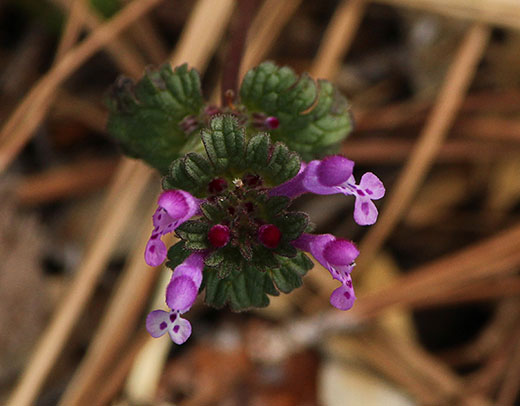
Henbit, typified by purple flowers, is an unwelcome guest in home lawns.
Patience needed to eliminate henbit, chickweed from lawns
K-State plant expert says herbicides won’t work this time of year
April 10, 2020
MANHATTAN, Kan. – If homeowners hoping for a lush green lawn are now starting to see little purple or white flowers in their yard, there’s bad news: there’s not a whole lot you can do about it.
K-State Research and Extension horticulture specialist Ward Upham says the nemesis is either henbit (purple flowers) or chickweed (white), a couple of winter annuals that begin growing in the fall.
“Trying to kill either at this late stage with a herbicide usually is a waste of time and money,” Upham said.
However, since they are winter annuals, henbit and chickweed will die as soon as the weather turns hot. So, the best management plan at this point is to simply keep the lawn mowed “until nature takes its course,” Upham said.
Then, he added, mark your calendar to permanently eliminate the plants next fall.
“Henbit and chickweed usually germinate about mid-October,” Upham said. “Spraying with 2,4-D, Weed-B-Gon, Weed Free Zone, Weed Out, or Trimec in late October to early November can go a long way toward eliminating these plants as they are small and relatively easy to control. You can also use a pre-emergent herbicide for lawns in late September as long as you have not recently put down grass seed.”
Upham and his colleagues in K-State’s Department of Horticulture and Natural Resources produce a weekly Horticultural Newsletter with tips for keeping yards healthy and beautiful year-round. The newsletter is available to view online; interested persons can also subscribe to have it delivered by email each week.
Note: Name brands used in this article are not intended to be an endorsement of any specific product by K-State Research and Extension.

